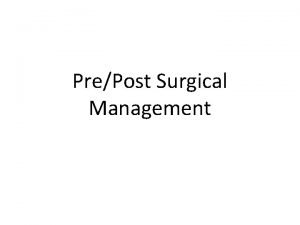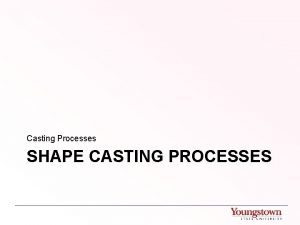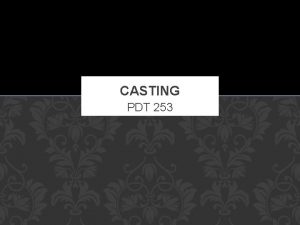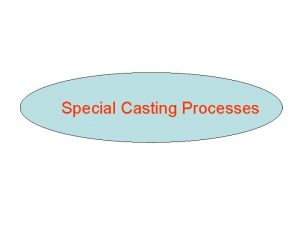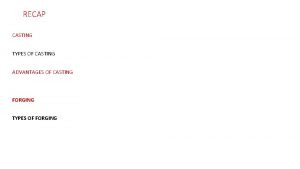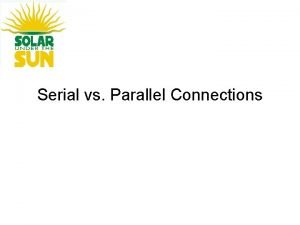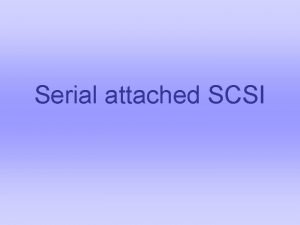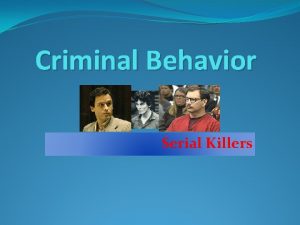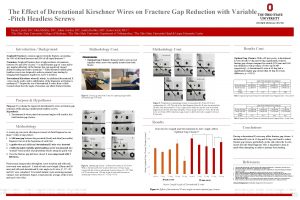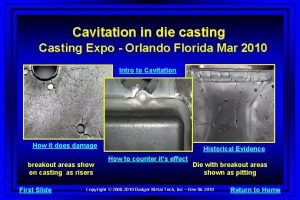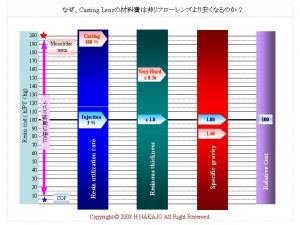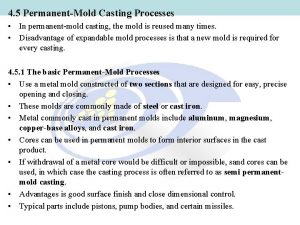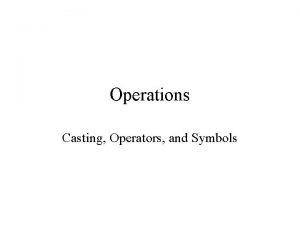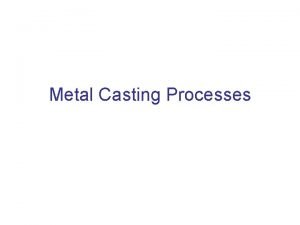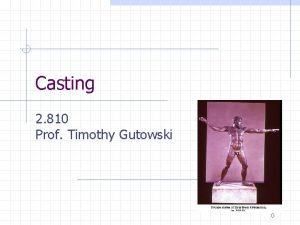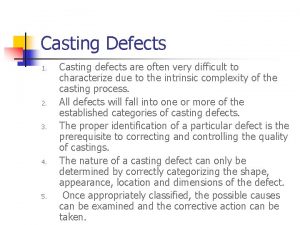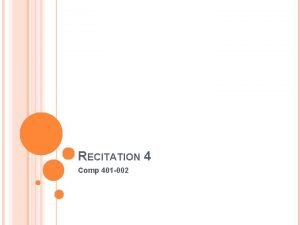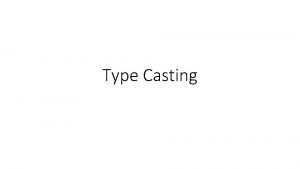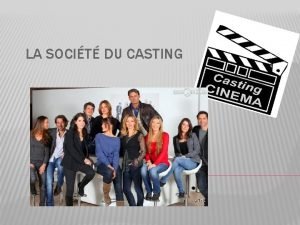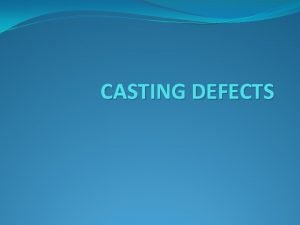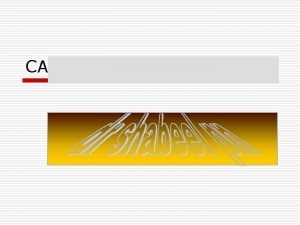Effectiveness of Serial Derotational Casting for Treatment of





























- Slides: 29

Effectiveness of Serial Derotational Casting for Treatment of Children with Early Onset Scoliosis Anny Hsu, MD 1, Hiroko Matsumoto, Ph. Dc 1, Mark Sullivan, BA 1, Evan Trupia, BS 1, Benjamin Roye, MD MPH 1, David P. Roye, MD 1, Michael G. Vitale, MD MPH 1 1: Department of Orthopaedic Surgery, Columbia University, New York, NY

-Disclosures. Michael G. Vitale, MD MPH Disclosure: I DO have a financial relationship with a commercial interest. Royalties: Biomet Consultant: Stryker, Biomet Research Support: CWSDRF, SRS, POSNA; OREF Travel Support: CWSDSG, Fox. PSDSG Other: CSSG - BOD POSNA – BOD IPOS- Chairman None relevant

Mehta -JBJS(B) Sep 2005) – 136 patients with infantile scoliosis treated with casting (Cotrel and Morel technique) – “Full correction” in 94 patients – “Partial correction” in 42 patients – RVAD, “asthenic” body risk factors

Infantile Idiopathic Scoliosis Natural History l l L thoracic most common Boys 3: 2 90% resolve by age 2 Treatment for other 10% variable

JPO 2009 • 55 pts progressive EOS > 1 yr f/u • Best response if <20 mo, idiopathic, <60 deg • Curve resolved in 17 (with avg initial RVAD 26 deg) and worsened in 6 • 9 went on to surgery

Serial casting as a delay tactic in the treatment of moderate-to -severe early-onset scoliosis. JPO 2012 Fletcher ND 1, Mc. Clung A, Rathjen KE, Denning JR, Browne R, Johnston CE • Single center's experience with casting 29 patients older than 2. 5 years with curves measuring >50 degrees • 15 patients (51. 7%) required surgical “growing” treatment for at most recent follow-up • Additional 7 patients (24. 1%) underwent AP fusion • Casting larger curves, <2. 5 years of age and with varied etiology may stall but not prevent surgery

The role of serial casting in early-onset scoliosis (EOS). Baulesh DM 1, Huh J, Judkins T, Garg S, Miller NH, Erickson MA. • 36 patients – 17% resolution – 31% surgery – 52% in brace with modest correction at f/u

Casting Light Traction De-rotation Windows &Trimming

Decision Making in Casting • Minimum 3 casts • 3 days between casts with xray prior to reapplication • Cast until response plateaus or curve less than 20 degrees or if no improvement after 3 casts

Patient LL: 1/2012 • 15 months old • IIS 41° • 41° R Thoracic Curve • C-EOS: I 2 N

Is this Natural History or Cast Success? Cast #1 30° 20 mo Cast #2 24° 22 mo Cast #3 15° 25 mo Cast #4 10° 27 mo 13° 37 mo

Purpose: to examine the effectiveness of scoliosis casting and identify factors that will affect the efficacy of casting treatment for children with EOS. Design: Retrospective, single-center study that reviewed EOS patients who underwent serial Mehta Derotational Casting

Methods Participants: • Inclusion: • Diagnosis of EOS • 1 -5 years of age • Radiographic evaluation between casting treatments Outcomes: • Cobb angle correction

Patient Characteristics 16 patients who underwent serial derotational casting treatment at CUMC met inclusion criteria Characteristic Variable Mean Range Age (yo) 2. 4 1 -5 Pre-Cast Cobb Angle (degrees) 50. 3 32 - 81 Number of Casts 4. 4 3 - 8

Etiology 16 patients who underwent serial derotational casting treatment at CUMC met inclusion criteria Etiology Number Idiopathic 13 (81%) Syndromic 2 (13%) Congenital 1 (6%) 5/13 “idiopathic patients” had developmental delays

Results: Cobb Correction 50% (8/16) had improvement in Cobb at final follow up 31% (5/16) Maintained ( < 10% Curve Progression, < 10% Correction) 19% (3/16) Progressed ( ≥ 10% Curve Progression)

Results: Cobb Correction for the 8 patients who had > 10% Cobb Improvement after the final cast (Casting Responders) Pre-Cast Cobb Post-Cast (degrees) Final Cobb (degrees) 47. 0 + 15. 0 29. 0 + 19. 8 Final Cobb Correction (%) 42. 7 + 25. 4

Results: Cobb Correction Average Curvature Improvement among all 16 subjects: After Initial Cast = 17. 2% Cobb angle Correction After 3 rd Cast = 22. 4% Cobb angle correction

Results: Cobb Correction 10 of the 16 Patients required ≥ 4 casts: Among the 10 patients there was an average of 8. 3% Cobb Angle Correction after the Final cast

Effects of Pre-Cast Cobb 9 of the 16 Patients had initial Cobb < 50 o and were 5 x more likely to have at least 10% curvature improvement after the final cast compared to the 7 patients with initial curve ≥ 50 o

Effects of Age at Initial Casting 7 of 16 Patients were < 20 mo at Initial Casting and were 5 x more likely to have at least 10% curvature improvement after the final cast compared to 9 patients who were > 20 mo

Current Disposition of Patients • Observation only: 2 (12. 5%) • Patients in Casts: 1 (6. 3%) • Patients in Braces: 12 (75%) • Patients who progressed to surgery: 1 (6. 3%)

Conclusions • 50% of patients undergoing serial derotational casting improvement at follow up • 81% of the patients either had significant Cobb correction (> 10%) or Maintained their Curve

Conclusions • Children younger than 20 months old or with Cobb < 50° at time of initial casting were More Responsive to Casting Treatment

Previous Work has Demonstrated QOL Negatively Affected by Casting Quality of Life and Burden of Care In Patients with EOS Undergoing Casting Vitale et al, ICEOS 2013 - EOSQ Scores from patients treated in CSSG and GSSG

At Pre-Casting Visits, Only Daily Living and Financial Burden Were Significantly Lower Among EOS Patients All HRQo. L Sub-Domain Scores at Post-Casting Visits Were Significantly Lower Than Age-Matched Norms Caregivers also rated higher Parental and Financial Burdens

Question • If most curves resolve by 2 years of age and… • If most patients treated > 2. 5 years progress and… • If casting/anesthesia is assd with negative effects on QOL…. • What are ideal indicatons for casting?

THANK YOU Michael G. Vitale, MD MPH mgv 1@columbia. edu 28

Patient MS Cast #1 37° 19 mo 25° 23 mo Cast #3 13° 28 mo 8° 54 mo
 Saro brace
Saro brace Drama serial drama serial
Drama serial drama serial Parallel input parallel output
Parallel input parallel output Inköpsprocessen steg för steg
Inköpsprocessen steg för steg Exspektans eller expektans
Exspektans eller expektans Bo bergman jag fryser om dina händer
Bo bergman jag fryser om dina händer Strategi för svensk viltförvaltning
Strategi för svensk viltförvaltning Verksamhetsanalys exempel
Verksamhetsanalys exempel Varians
Varians Datorkunskap för nybörjare
Datorkunskap för nybörjare Tack för att ni har lyssnat
Tack för att ni har lyssnat Läkarutlåtande för livränta
Läkarutlåtande för livränta Treserva lathund
Treserva lathund Vad står k.r.å.k.a.n för
Vad står k.r.å.k.a.n för Påbyggnader för flakfordon
Påbyggnader för flakfordon Tack för att ni lyssnade
Tack för att ni lyssnade Egg för emanuel
Egg för emanuel Tack för att ni har lyssnat
Tack för att ni har lyssnat Personlig tidbok för yrkesförare
Personlig tidbok för yrkesförare Rutin för avvikelsehantering
Rutin för avvikelsehantering Vad är vanlig celldelning
Vad är vanlig celldelning Verifikationsplan
Verifikationsplan Fspos vägledning för kontinuitetshantering
Fspos vägledning för kontinuitetshantering Myndigheten för delaktighet
Myndigheten för delaktighet Presentera för publik crossboss
Presentera för publik crossboss Mall debattartikel
Mall debattartikel Kung dog 1611
Kung dog 1611 Tobinskatten för och nackdelar
Tobinskatten för och nackdelar Tack för att ni har lyssnat
Tack för att ni har lyssnat Stig kerman
Stig kerman
